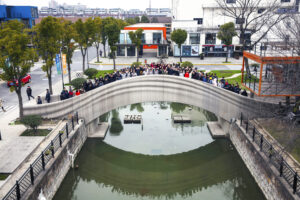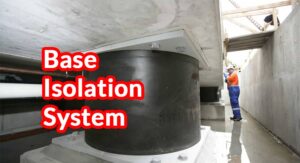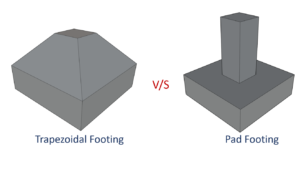
Backfilling in Foundation : Types and Procedure

What Is Backfilling?
In the construction, backfilling stands as a pivotal process, essential for fortifying and supporting the foundations and structural components of buildings. It involves the replacement or reuse of excavated soil to ensure the structural integrity of a project.

Factors affecting Backfilling in Foundation
Several factors play crucial roles in the backfilling process:
- Selection of Appropriate Backfill Material: The choice of backfill material is paramount, as it directly impacts the stability and longevity of the structure. Materials range from coarse-grained soils to commercial by-products like furnace slag or fly ash, each possessing distinct characteristics suitable for specific applications.
- Compaction of Backfill: Proper compaction of backfill material is imperative to prevent settling and ensure uniform support for the foundation. Compaction techniques involve the use of heavy machinery and precise engineering to achieve desired density levels.
- Timing of Backfilling: Timing is critical in backfilling to allow for adequate curing of the foundation. Premature backfilling can lead to structural issues such as cracking, emphasizing the need for patience and adherence to recommended curing periods.
Types of Backfilling in Foundation
Backfilling materials can be categorized into various types based on their composition and characteristics:
Course Grained Soil
These include gravelly and sandy soils, offering excellent drainage properties and high load-bearing capacity, ideal for enhancing foundation stability.
Fine-Graded Soils Of Low To Medium Plasticity
Organic clays and inorganic silts with low to medium plasticity are utilized in areas where cohesive strength and stability are paramount, ensuring minimal settlement and deformation.
Commercial By-Products
Furnace slag and fly ash serve as viable alternatives to natural backfill materials, offering environmental benefits and cost-efficiency where locally available.
CLSM (Controlled low strength material)
CLSM presents a self-compacting, flowable, low-strength cementitious option for backfilling, void filling, and utility bedding, providing versatility and ease of application.
Steps involved in backfilling in foundation
- Preparation: Ensure the foundation cures adequately before commencing backfilling, typically waiting for five to seven days to minimize the risk of structural flaws.
- Site Preparation: Clean the site of debris, vegetation, and excess water to create a suitable foundation for backfilling.
- Material Selection: Choose a balanced mix of materials, including excavated soil, rocks, and stones, considering factors like moisture retention and structural stability.
- Layered Backfilling: Employ a layered approach to backfilling, with each layer compacted and watered to achieve optimal density and uniform support.
- Equipment Utilization: Utilize heavy machinery such as excavators and compactors to efficiently fill and compress the backfill material, ensuring proper distribution and compaction throughout the foundation area.
- Quality Control: Regular inspection and adherence to specifications are crucial to prevent issues such as settlement or inadequate support, with strict guidelines against the use of unsuitable materials like black cotton soil in critical foundation areas.
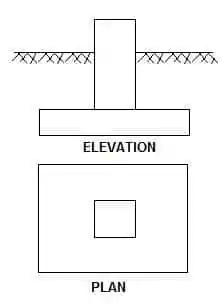
3. Combined Footing
A combined footing supports two columns. It is used when the two columns are so close to each other that their individual footings would overlap. A combined footing is also provided when the property line is so close to one column that a spread footing would be eccentrically loaded when kept entirely within the property line. By combining it with that of an interior column, the load is evenly distributed. A combined footing may be rectangular or trapezoidal in plan.

4. Strap or Cantilever Footing
A strap (or cantilever) footing consists of two isolated footings connected with a structural strap or a lever. The strap connects the two footings such that they behave as one unit. The strap is designed as a rigid beam. The individual footings are so designed that their combined line of action passes through the resultant of the total load. a strap footing is more economical than a combined footing when the allowable soil pressure is relatively high and the distance between the columns is large.
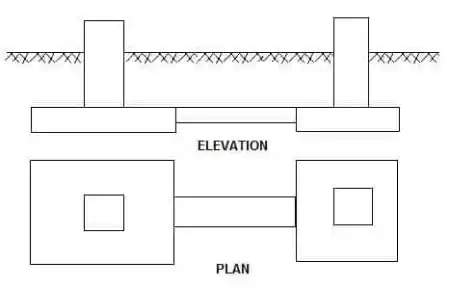
5. Mat or Raft Foundations
A mat or raft foundation is a large slab supporting a number of columns and walls under the entire structure or a large part of the structure. A mat is required when the allowable soil pressure is low or where the columns and walls are so close that individual footings would overlap or nearly touch each other. Mat foundations are useful in reducing the differential settlements on non-homogeneous soils or where there is a large variation in the loads on individual columns.



